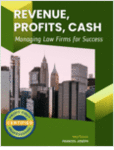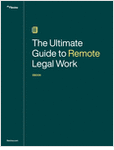 Mediation of employment disputes is not an exact science, there is no magic formula, and to paraphrase the song from the Broadway show Hamilton, no one knows how the parties get to “yes” because no one else is in “the room where it happens” – that is except for the mediator! As the song references, Hamilton along with Jefferson and Madison, convened in a room where a political compromise was reached. And compromise is indeed what makes for a successful mediation.
Mediation of employment disputes is not an exact science, there is no magic formula, and to paraphrase the song from the Broadway show Hamilton, no one knows how the parties get to “yes” because no one else is in “the room where it happens” – that is except for the mediator! As the song references, Hamilton along with Jefferson and Madison, convened in a room where a political compromise was reached. And compromise is indeed what makes for a successful mediation.
Employment matters generally involve parties who know one another, and therefore are more susceptible to emotional and irrational decisions. However, paradoxically, that is also why employment disputes are appropriate for mediation and why, with an adept neutral, a positive outcome can be achieved that suits all parties.
The reasons why mediation will result in a “win-win” for all sides are many, but before anything can happen, the parties must get into the room. And depending on your client’s situation, different motives will be more applicable and compelling when developing a mediation strategy.
Following are some insights to help your mediations be successful, regardless of the party you represent.
Mediation saves all involved both time and money
A mediation can be set up relatively easily. Rather than dancing to the demands of a judge and the court calendar, timing can be adjusted to fit the schedules of all the parties. Employment mediations tend to last a full day or more and allow each party to be heard and all issues explored. Mediation can also be far more expedient than litigation which can often take months or years, monopolizing the time and attention of essential players. The financial costs associated with litigation can be staggering. Legal fees, expert fees and expenses, and discovery costs can take their toll. Further, there are also emotional and human costs to consider, as well as other expenses associated with time and focus taken from the actual business of the employer.
Mediation provides the parties with control
Control over the discovery process and more importantly the definitive decision of settlement, is a significant factor why mediation is more effective than litigation. Depending upon the jurisdiction, even initial discovery production in an employment case is mandated by the court. In addition to the exchange of witnesses and documents, e-discovery is often involved and can be both disruptive and expensive. There are emails, text messages, instant messages, and social media accounts to take into consideration. The review of data involved can be time-consuming and potentially disruptive for both the company and the employee.
At mediation, the parties can collectively decide what information to share and when. And the ultimate control is in the actual resolution, as the parties decide on the settlement terms, both monetary and otherwise, without relying on either judge or jury. Finally, the outcome of the case does not demonstrate a scenario in which one side will win and the other will lose. Rather, mediation provides a forum where both sides are satisfied.
What happens in the room is confidential
Discretion and privacy are often key factors for all involved, and that generally cannot happen with litigation. For the individual, it prevents a future employer from making a hiring decision based upon disclosures made during the process (such as, past performance). For an employer, it prevents other employees, customers, business partners, and competitors from making a business decision based upon a prior claim.
Many jurisdictions prohibit non-disclosure agreements for claims of discrimination, harassment and retaliation. Unless it is the complainant’s preference, mediation is a way to craft the settlement to include confidentiality.
Negotiations in the room
Once the parties agree to be in the room, they should agree on the format for their opening statements. Agreeing on this simple step can help set the table for the rest of the negotiations. The statements can be as elaborate as an opening at trial or a summary judgment argument or they can be as elementary as simple introductions, so long as the parties remain respectful. After delivery of these statements, the parties separate into their own rooms and the neutral is there to help facilitate the settlement.
Often, upon hearing an initial demand from the employer that is deemed exorbitant, a response might be to threaten to leave or to counter with an equally low offer. This in turn may prompt the employee to feel dismissed or diminished which may spiral with the employee threatening to leave the mediation. However, once again, take heed from Hamilton, “you don’t get a win unless you play the game.” Allowing the parties to express their frustrations, anger and keeping all sides talking and engaged in the process is critical. Without a full dialog there can be no settlement.
The mediator is privileged to be in the room where the decision happens
In the room, the mediator can observe the parties and their counsel and gauge their emotions and response to the process. The parties can respond with rational thinking, or they may resort to a “fight or flight,” response. There is a release of hormones that will either cause someone to stay and deal with the threat or run away and escape. A skilled mediator must understand the parties and present information in a way as to not trigger this reaction. The neutral needs to know just how to diffuse a very emotional situation that is so highly charged and so very personal, with the goal of moving the parties towards a mutually agreed upon settlement.
Exchanging information is critical
If the mediation is taking place early in the life of the claim, the parties may not have shared any evidence supporting their position. Unidentified or unfamiliar data might include e-discovery, as well as witness statements, doctors’ reports, personnel files, and company statistics. Parties often resist giving “free” discovery to the other side. This instinct is understandable. However, one cannot expect to convince the other side to alter their view of the value of the case, with the likelihood of success, without proving this matter to them. Information will eventually be exchanged pursuant to a court order, albeit there may be expensive discovery motions just to get there. Why not let the mediator help make the arguments while the parties are in the room ready to compromise and reach a settlement agreement?
Being candid with the mediator and the other side can help bring about a settlement.
At times it may seem as if the mediator may not be sympathetic to your client’s position or may be aligned with the other side. Rest assured the pressure that is being exerted in your room is likewise being exerted in the other room. It is important to remember that the mediator is working to get the parties to come to an agreement, and the way to do that is to highlight the strengths and weaknesses of both sides, factually and legally. It is incumbent upon everyone in the room to listen carefully, to hear what the participants are saying, and to weed out manipulation. Words matter, so listen for possible exaggeration and omissions.
Final Thoughts
When participating in a mediation, counsel is well-aware of their clients’ expectations and place a settlement value based upon the facts that are known. As the mediation progresses, evidence may emerge that changes the legal position and/or damages. The mediator is the one who must convey this information which helps the attorney explain the shift in the evaluation to the client. While not the judge or jury, an experienced mediator needs to help the parties reassess expectations. The neutral must be careful not to undermine the attorney, for if the client loses confidence in the lawyer, the process can fail. The mediator needs to help educate and persuade the players and guide them toward a mutually agreeable settlement.
But first and foremost, in order to get the parties to “yes” in a mediation, you need to get them into “the room where it happens.”
__________________________________________________________
Reprinted with permission from the February 24, 2020 issue of The New York Law Journal © 2020 ALM Media Properties, LLC. Further duplication without permission is prohibited. All rights reserved.
__________________________________________________________
Rhonda L. Epstein, Esq. is a member of NAM’s (National Arbitration and Mediation) Hearing Officer Panel and is available to arbitrate and mediate labor and employment cases throughout the New York Metro area. She is a seasoned litigator with more than 35 years of wide-ranging experience in civil litigation and concentrates her legal practice in employment law and housing discrimination. As both a litigator and mediator, Ms. Epstein has successfully counseled, supervised, and mediated employment law cases related to claims of age, national origin, sexual orientation, gender identity, disability, religion, and pregnancy discrimination. Ms. Epstein is well-respected professionally by both sides of the bar and is known for her fair and objective approach to the resolution of cases. In 2023, for the second year in a row, she was voted a Top Ten Arbitrator in the New York Law Journal “Best Of” survey. Ms. Epstein also has been awarded an AV Preeminent Peer Rating by Martindale-Hubbell.
For any questions or comments, please contact Jacqueline I. Silvey, Esq. via email at [email protected] or via telephone at (800) 358-2550.




